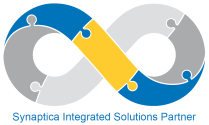Last Thursday we attended a workshop day at the European Bioinformatics Institute as part of our joint BioSolr project. This was an opportunity for us to give some talks on particular aspects of Apache Lucene/Solr and hear from the various teams there on how they are using the software. The workshop was oversubscribed – it seems that there are even more people interested in Solr on the Wellcome Campus than we thought! We were also happy to welcome Giovanni Tummarello from Siren Solutions in Galway, Ireland and Lewis Geer from the EBI’s sister organisation in the USA, the NCBI.
We started with a brief introduction to BioSolr from Dr. Sameer Velankar and Flax then talked on Best Practices for Indexing with Solr. Based very much on our own experience and projects, we showed how although Solr’s Data Import Handler can be used to carry out many of the various tasks necessary to import, convert and process data, we prefer to write our own indexing systems, allowing us to more easily debug complex indexing tasks and protect the system from less stable external processing libraries. We then moved on to a presentation on Distributed Indexing, describing the older master/slaves technique and the more modern SolrCloud architecture we’ve used for several recent projects. We finished the morning’s talks with a quick guide to how to migrate from Apache Lucene to Apache Solr (which of course uses Lucene under the hood but is a much easier and full featured system to work with).
After lunch and some networking, we gave a further short presentation on comparing Elasticsearch to Solr, as some teams at the EBI have been considering its use. We then heard from Giovanni on Siren Solutions‘ innovative method for indexing heirarchical data with Solr using XML. His talk mentioned how by encoding tree positions directly within the index, far fewer Solr documents need to be created, with an index size reduction of 50% and up to twice the query speed. Siren have recently released open source plugins for both Solr and Elasticsearch based on this idea which are certainly worth investigating.
Following this talk, Lewis Geer described how the NCBI have built a large scale bioinformatics search platform backed both by Solr, built on commodity hardware and supporting up to 500 queries per second. To enable queries using various methods (Solr, SQL or even BLAST) they have built their own internal query language, standard result schemas and also collaborated with Heliosearch to develop improved JOIN facilities for Solr. The latter is a very exciting development as JOINs are heavily used in bioinformatics queries and we believe these features (made available recently as Solr patches) can be of use to the EBI as well. We’ll be investigating further how we can both use these features and help them to be committed to Solr.
Next were a collection of short talks from various teams from the Wellcome campus on how they were using Solr, Lucene and related tools. We heard from the PDBE, SPOT, Ensembl, UniProt, Sanger Core Services and Literature Services on a varied range of use cases, from searching proteins using Solr to scientific papers using Lucene. It was clear that we’ve still only scratched the surface of what is being done with both Lucene and Solr, and as the project progresses we hope to be able to generate repositories of useful software, documentation, best practises, guidance on migration and scaling and also learn a huge amount more about how search can be used in bioinformatics.
Over the next few weeks members of the Flax team will be visiting the EBI to work directly with the PDB and SPOT teams, to find out where we might be most effective. We’ll also be running Solr user group meetings at both the EBI and in Cambridge, of which more details soon. Do let us know if you’re interested! Thanks to the EBI for hosting the workshop day and of course the BBSRC for funding the BioSolr project.














